In this section, you will examine the three factors that affect economic activities in various regions around the world: climate, resources, and infrastructure. Read more about each element below.
The climate of an area can determine the types of economic activities within a region. Climates with warmer temperatures and abundant, fertile soil may be better suited for farming, while a much colder climate may not be suitable for farming.
![]() Scroll over each image to learn more.
Scroll over each image to learn more.
Resources are important factors that affect the types of economic activities of a region. There are two types of resources.
Natural resources - items provided by nature from which people produce goods or services
Human resources - individuals who do the work within an economy
Natural resources occur naturally within environments undisturbed by mankind while human resources make up the workforce of an organization. In the photo shown below, blueberries which grow wild in Kake, Alaska, are being harvested as an organic fruit that sells for up to $3.10 per pound. This is an example of commercial farming.
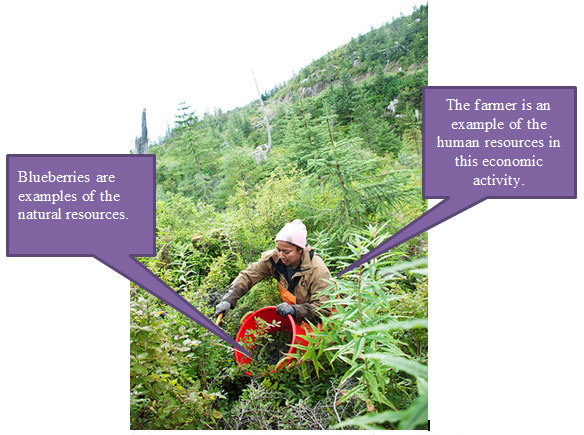
The infrastructure within a region is another factor that affects the economic activities of a region. Infrastructure is the organization of systems such as communication, transportation, and technology that support an economy. The more advanced the infrastructure, the more advanced and prosperous the economy.
Look at the two maps below. What do they have in common?
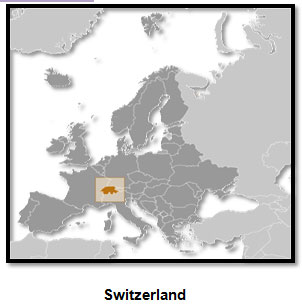
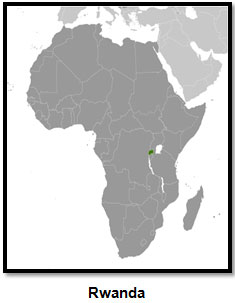
Both Switzerland and Rwanda are small, landlocked countries. Neither has direct access to a sea. These two countries, however, have economies that are completely different; Switzerland has a highly skilled workforce, while 90 percent of Rwanda’s population is engaged in subsistence agriculture.
Read below about the resources of each of these countries.
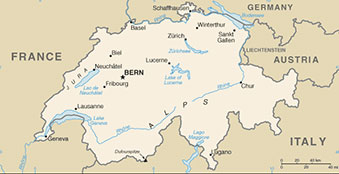
You have already learned that Switzerland has a highly skilled labor force and an economy led by services such as banking and insurance. Coupled with the resources listed above, Switzerland is a highly technological society. Switzerland has strong ties with its neighboring countries and maintains a constant level of peace.
To read more about Switzerland, click on the link below.
Switzerland
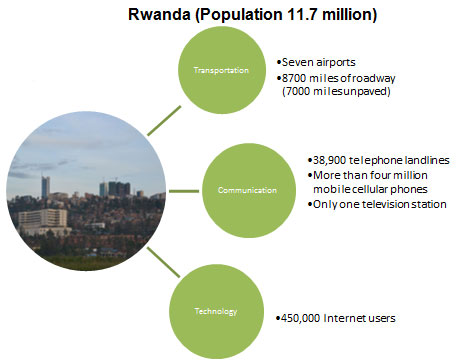
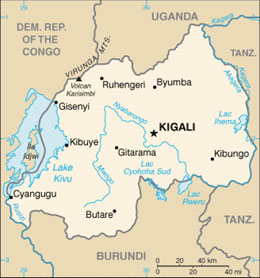
Although Rwanda has rich fertile soil, the dominant subsistence farming leads to slow food production. The resources listed above indicate that the infrastructure of the country does not support much in the way of technological innovation. Rwanda is also affected by the political instability that plagues its neighboring countries; Rwanda is unable to maintain a positive trading relationship with any of these countries given the constant unrest.
To read more about Rwanda, click on the link below.
Rwanda
Given the geographic similarities of Switzerland and Rwanda, think about the how the infrastructure impacts the economic activities of each country. Answer the following questions in your notes.
Interactive popup. Assistance may be required.
Similarities - Both countries are small and landlocked and have agricultural output.
Interactive popup. Assistance may be required.
The constant political instability of the neighboring countries makes the use of the waterway impossible for trade.
Interactive popup. Assistance may be required.
The primary economic activities in Switzerland revolve around services such as banking and insurance; technology is extremely important to these industries.
In this lesson, you were able to identify and locate economic activities around the world. Factors such as climate and resources are important to determining what types of economic activities are located within a region.
Sources of images and videos used for this section as they appear, top to bottom: